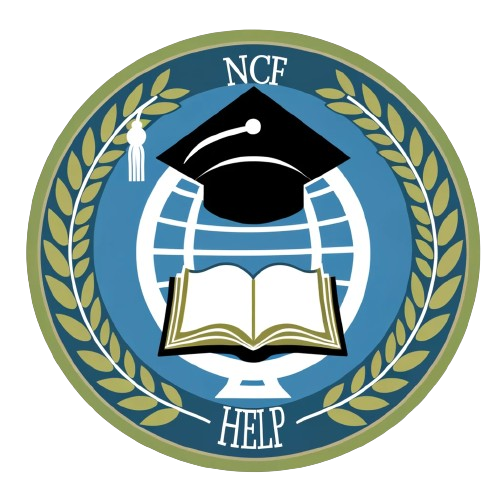In the dynamic landscape of education, where the boundaries between subjects often blur, interdisciplinary learning emerges as a powerful tool for nurturing holistic understanding and fostering critical thinking among students. In line with the transformative goals set forth by the New Education Policy (NEP) schools are embracing interdisciplinary learning as a cornerstone of their educational framework, bridging the gap between subjects, and cultivating well-rounded individuals equipped for the challenges of the 21st century.
What is Interdisciplinary Learning?
Interdisciplinary learning goes beyond traditional single-subject teaching. It encourages students to explore connections between different disciplines such as science, mathematics, social studies, language arts, and the arts [1]. Rather than viewing subjects in isolation, interdisciplinary learning encourages students to see the world as an interconnected web of knowledge, where concepts from one subject can enhance understanding in another.

Why is it Important?
Interdisciplinary learning fosters a deeper understanding of complex real-world issues by providing multiple perspectives and approaches. It encourages students to think critically, solve problems creatively, and communicate effectively across disciplines. By breaking down the barriers between subjects, students develop a holistic worldview that prepares them for success in an increasingly interconnected global society [2].
Implementing Interdisciplinary Learning in Schools
The NEP lays the foundation for a holistic and flexible education system that promotes interdisciplinary learning from the early years [3]. Within the national curriculum framework, schools are encouraged to integrate interdisciplinary approaches across all stages of education, from primary to secondary levels.
How can Schools implement interdisciplinary learning?
- Curriculum Design: Schools can redesign their curriculum to incorporate interdisciplinary themes and projects that cut across traditional subject boundaries. For example, a project on sustainable development could integrate concepts from science, social studies, and mathematics, encouraging students to explore the environmental, economic, and social dimensions of sustainability [4].
- Collaborative Teaching: Teachers can collaborate across disciplines to create engaging learning experiences that integrate multiple perspectives and skills. By working together, teachers can leverage their expertise to design interdisciplinary lessons that address diverse learning styles and interests.
- Experiential Learning: Schools can provide opportunities for experiential learning through field trips, guest lectures, and hands-on projects that allow students to apply their knowledge in real-world contexts [5]. For example, a history lesson on the Indian independence movement could be supplemented with a visit to a local museum or a discussion with a freedom fighter’s descendant.
- Assessment Strategies: Assessment in interdisciplinary learning should focus on the integration of knowledge, skills, and competencies across disciplines rather than rote memorization of facts. Schools can use a variety of assessment strategies such as project-based assessments, portfolios, and presentations to evaluate students’ ability to think critically, communicate effectively, and solve problems collaboratively.
How will Interdisciplinary Learning benefit my School?
Interdisciplinary learning in schools offers numerous benefits for students, teachers, and the education system as a whole:
- Holistic Understanding: Students develop a holistic understanding of complex concepts by making connections across different subjects, leading to deeper learning and retention of knowledge.
- Critical Thinking Skills: Interdisciplinary learning encourages students to think critically, analyse information from multiple sources, and solve problems creatively, preparing them for success in higher education and the workforce [6].
- Collaboration and Communication: By working collaboratively on interdisciplinary projects, students learn to communicate effectively, negotiate differences, and respect diverse perspectives, essential skills for thriving in a multicultural society.
- Lifelong Learning: Interdisciplinary learning fosters a love for learning and inquiry, empowering students to become lifelong learners who seek out new knowledge and engage with the world around them [7].
In conclusion, interdisciplinary learning isn’t just an educational strategy; it’s a vital transformation needed in our schools today. By breaking down traditional barriers between subjects and embracing this holistic approach, we do more than prepare our students to succeed—we prepare them to lead. As the NEP lays the groundwork, we, as educators, must equip our students—the future leaders of India—with the skills necessary to make smarter, more informed decisions for themselves and for our nation.

Further reading
- Boix Mansilla, VS., a Duraisingh, E. D. (2007). Targeted assessment of students’ interdisciplinary work: An empirically grounded framework proposed. The Journal of Higher Education, 78(2), 215-237. – Discusses the assessment of interdisciplinary learning and its connection to 21st-century skills.
- Dewey, J. (1938). Experience and education. Simon & Schuster. – A classic text that emphasizes the importance of experience in the learning process.
- Johnson, D. W., & Johnson, R. T. (2009). An educational psychology success story: Social interdependence theory and cooperative learning. Educational Researcher, 38(5), 365-379. – This article discusses the benefits of cooperative learning and its impact on social and communication skills.
- Kolb, D. A. (2014). Experiential learning: Experience as the source of learning and development. FT press. – A foundational work on experiential learning theory and its applications.
- National Education Policy 2020, Section 4, Curriculum and Pedagogy in Schools. – Althought the whole document is important, section 4 of the NEP outlines the shift towards a more holistic and multidisciplinary approach to education.
- Repko, A. F., & Szostak, R. (2020). Interdisciplinary research: Process and theory (2nd ed.). Sage Publications. – Provides a comprehensive overview of interdisciplinary learning and research.
- United Nations Educational, Scientific and Cultural Organization (UNESCO). (2017). Education for Sustainable Development Goals: Learning objectives. – Provides a framework for integrating sustainability concepts into education.
- Sterling, S. (Ed.). (2010). Sustainability education: Perspectives and practice across higher education. Taylor & Francis. – Offers insights into interdisciplinary approaches to sustainability education.
- Wiggins, G. P., & McTighe, J. (2005). Understanding by design. Association for Supervision and Curriculum Development (ASCD). – This book explores the concept of backward design in curriculum development, emphasizing the importance of understanding and transfer of learning.

